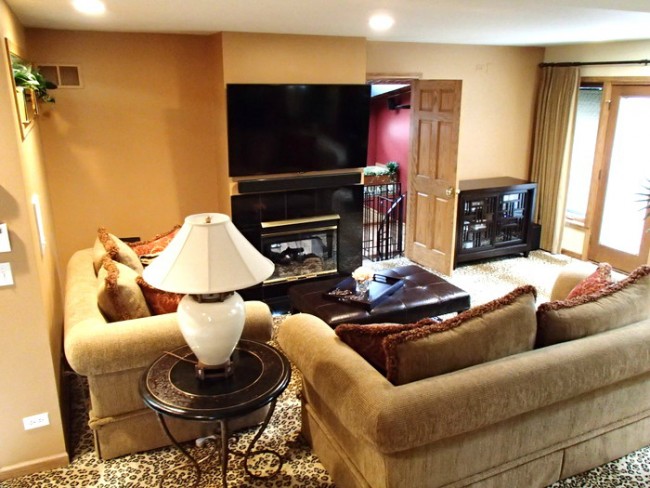
For many homeowners, creating an environment that is inviting, comfortable, and in good taste is a high priority when designing their home theatre. In addition to these three factors, there are several other considerations that should be explored when designing your entertainment area.
Is it a multipurpose room or a dedicated room?
Individuals with smaller homes may decide to do a partial conversion of a family room into a home theatre area. This means the room may also serve as a playroom or conversation area when hosting guests. If this is the case, the choice in furnishings and décor have to offer sufficient flexibility to blend in nicely with the rest of your décor, and at the same time create an environment conducive to social engagements. If you are taking this path, your professionally installed flat screen TV might be displayed over the fireplace and your TV size might be smaller than what one would select for a dedicated home theatre. The positioning of other devices such as the Blu-ray player and sound system will also have to be managed with significant care to the overall aesthetics of the room. Because family rooms often feature larger windows it is important to consult with your professional installer about the acoustic issues you might face and the type of window covering needed to make corrections.
Furniture Form and Function
If you have a dedicated home theatre, your selection of furniture has to be made with the purpose in mind. Some homeowners select theatre-style seating, while other prefer furnishings that include certain comforts such as USB chargers or small consoles for the storage of remotes, snacks, and other small items.
The acoustic responsiveness and positioning of the furniture will impact the sound quality of your space. Consult with the acoustics specialist before selecting each piece to obtain optimal results. Avoid selecting pieces purely for aesthetic value without taking into account function. The room is a delicate orchestration of objects and technology aimed to deliver superior visual and audio experience. Always keep that in mind.
Because home theatres are usually spaces where families will consume snacks, consider furniture that is treated for stains or made of materials such as leather that are easy to wipe should a spill happen.
Cost of Your Furnishings
When it comes to home theatre design, it is imperative to make smart budget allocations. It would be unwise to shorten your budget on sound and audio technology in order to have luxury seating to consume a less than ideal audiovisual experience. Focus first on having the best technology, superior design, and installation, which is where your budget will give you the most value.

